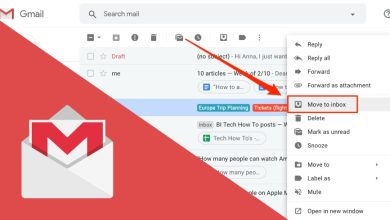The Top 7 Web Development Tools That Will Dominate In 2022!

The web development tools market has exploded in recent years, with hundreds of new development tools available to web developers and entrepreneurs alike. With all of the variety in development tools available, it can be hard to determine which devices are worth using and which ones are entirely irrelevant or redundant with other options.
So to help you navigate the sea of web development tools, I’ve compiled a list of the top 7 web development tools that will dominate in 2022. The list includes some well-known names that have withstood the test of time and some newer development tools on the rise to stardom.
Here we go!
7 Best Web Development Tools that Will Dominate in 2022 and Beyond!
1) Chrome DevTools
Chrome DevTools is a Google-made set of developer tools for Chrome that lets you debug, test, and inspect your website and apps from directly within Chrome itself. As a bonus, these tools are supported in several other browsers, including Firefox, Safari, Opera, and IE 11.
One of DevTools’ best features is its ability to record JavaScript activity as you browse a site so that you can replicate bugs or take them back to your teammates. You can even create snapshots of a page at any time and use them later when trying out responsive design tweaks.
2) Sass
Sass (Syntactically Awesome Style Sheets) is a CSS extension language that adds power and elegance to the basic capabilities of CSS. Its main advantage over plain CSS is that it makes writing stylesheets faster, easier, and more efficient. More importantly, Sass makes maintaining a large site’s styles much simpler.
Sass helps you write cleaner and more efficient code using an abstract syntax. Then, through a simple command-line tool like Codekit or Dreamweaver CC’s own built-in watch function, you can easily compile your work into valid CSS that can be used on any web page.
3) JQuery
JQuery has been around for quite some time now, and that’s not going to change any time soon. The library is popular because it allows front-end developers to create excellent interactive experiences without coding JavaScript.
If you’re working on a new project or just learning how to build a website, you can consider JQuery one of your go-to tools. It also supports various CSS frameworks such as Bootstrap and Foundation. It speeds up development by ensuring cross-browser compatibility for elements, events, animations, etc.
4) GitHub
GitHub, a web-based hosting service for software product development projects using the Git revision control system, offers paid plans for private repositories and free accounts for open-source projects.
It provides access control and several collaboration features such as bug tracking, feature requests, task management, wikis, and code review through integrated terminal and desktop client interfaces.
5) Sketch
You really can’t go wrong with using Sketch for mobile and web interface design. Its vector tools make it easier to create scalable graphics that look amazing on high-resolution screens, even without high-end computers.
What’s more, it’s an all-in-one platform that comes with an organized library of UI elements and icons for your designs. Plus, Sketch makes it easy to collaborate with other designers via its cloud sync function if you’re working in a team environment. As far as web development goes, there aren’t any better web development tools out there than what Sketch has to offer—and it only keeps getting better as time goes on.
6) Visual Studio Code
Visual Studio Code is a free and open-source editor that has garnered quite a bit of attention since its release in 2015. This web development tool offers many of the same benefits as Microsoft’s more robust Visual Studio product and a lightweight web development tool.
The VS Code team is adding new features rapidly, and it has already become one of my top picks for top web development tools. What’s more, version 2.0 was released recently with support for Vue.js, Markdown editings, and project management options such as Jira and GitHub natively built-in.
7) Bootstrap
Bootstrap is a popular front-end framework for developing responsive, mobile-first projects on the web. The framework comes with CSS, HTML, and JavaScript files that make it easy to create a responsive layout that adapts well to different screen sizes. It also comes with pre-styled components like modals, dropdowns, and buttons.
You can customize Bootstrap to fit your brand or add new features. Designers who are comfortable working with CSS will appreciate how easily they can tweak Bootstrap’s existing elements and change their look without coding everything from scratch.
Final Take!
So these were my pick for the top seven web development tools that will dominate in 2022. As more time goes by, these tools will become even more necessary. To stay ahead of your competition, you need to be using these website development tools today.
This list could change as top website development companies emerge and new technologies are created—but it’s an excellent place to start right now. So pick up one or two tools today to start setting yourself apart from your competitors!
Thank You!




